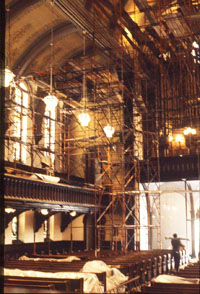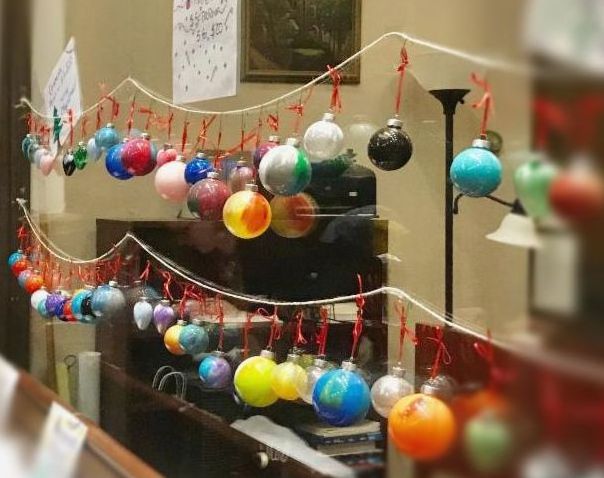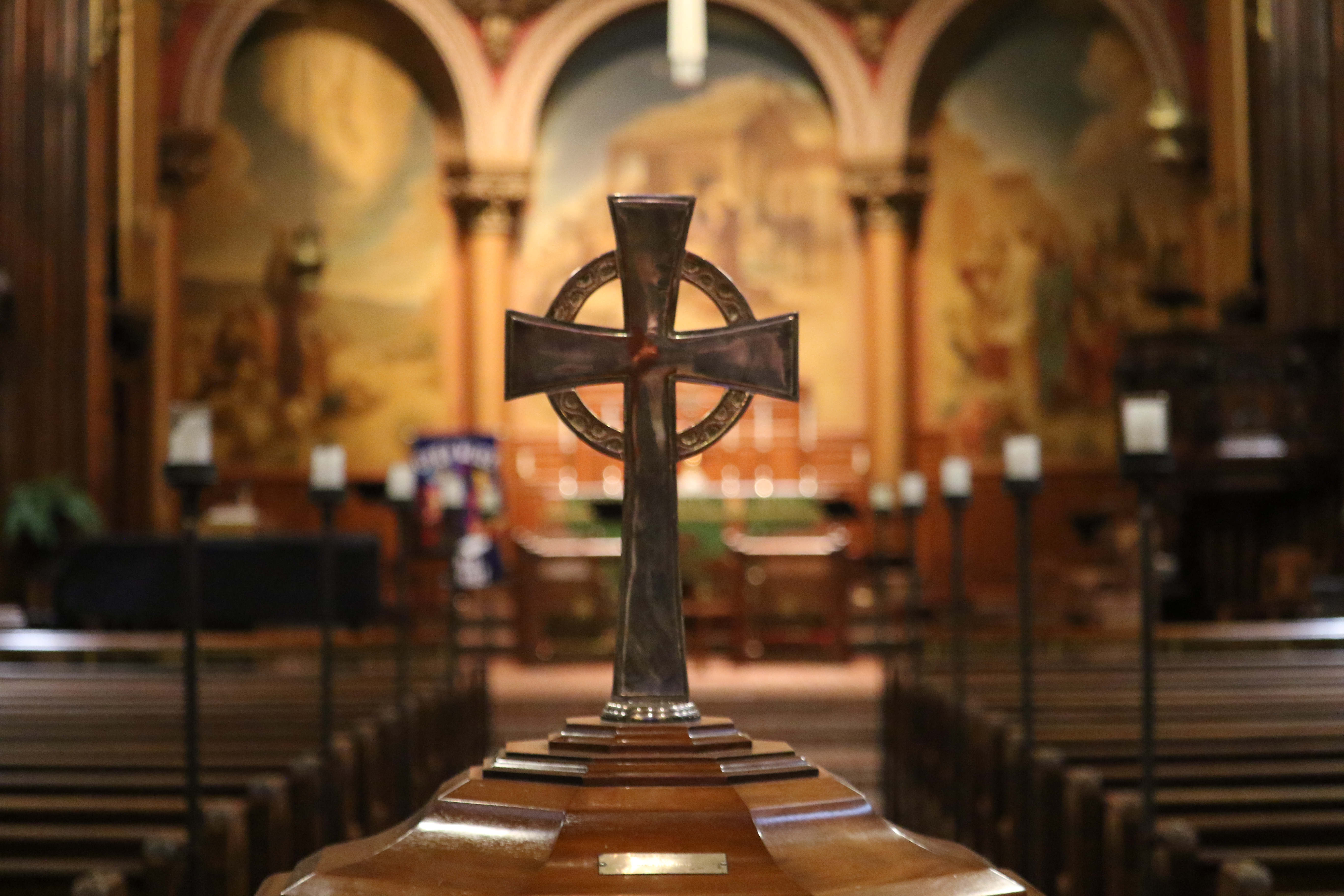THE BUILDING
ARCHITECTURE
In keeping with its official name, The Church of the Holy Trinity, Rittenhouse Square, has always been closely linked with the life of its neighborhood in the heart of Center City Philadelphia. It was founded at the moment when urban development, which had moved westward from the Delaware River, reached the southwestern of the four squares laid out in William Penn’s original plan. A group of prosperous merchants and professional men first met in 1855 to plan formation of a new Episcopal parish near the square.
The founders chose Philadelphia architect John Notman’s design for a building of sandstone in the Norman or neo-Romanesque style often favored by low-church congregations. Although the original plan for the building featured a grand steeple that would dominate the square’s landscape, its interior was in effect a large lecture hall seating 1500, with large galleries on the sides. The building was completed in 1859.
The tower was added in 1867 by George Hewitt of Fraser, Furness, and Hewitt. The Parish House was added in 1890, intended as a home for the Rector and as an entertaining site. Today the Parish House is utilized as office space and community space for the Parish, hosting meetings, choir rehearsals, and community events like the Shrove Tuesday pancake supper.
ART
Each generation of parishioners left its mark on the building, gradually adding embellishments to the once-austere interior. In 1880 renovations directed by Henry Van Brunt of Boston and James Sims of Philadelphia added a barrel-vaulted ceiling decorated with delicate Victorian stenciling and enlarged the chancel.
Over subsequent decades, stained glass windows and an impressive pulpit and reading desk were added as memorials. Unlike many churches, which installed their stained glass all at once with plans for which gospel or biblical stories would be included, the stained glass at CHT was chosen by the donor, resulting in a patchwork of stories across the Sanctuary. The stained glass windows include five by Louis Comfort Tiffany and one by Luc-Olivier Merson.
The oil-on-canvas murals in the chancel were painted by noted New York muralist Hildreth Meir in 1942. The mural depicts a Bethlehem nativity scene and includes three panels: "Shepherds," "Nativity," and "Magi." The mural was commissioned by Paul Cret to honor and reference the carol "O Little Town of Bethlehem."
RENEWAL
Following a long period of deferred maintenance, the Church of the Holy Trinity has undertaken aggressive measures to preserve our historic building and restoration efforts are ongoing. To join us in that work, visit Rebuilding Restoring Together.







